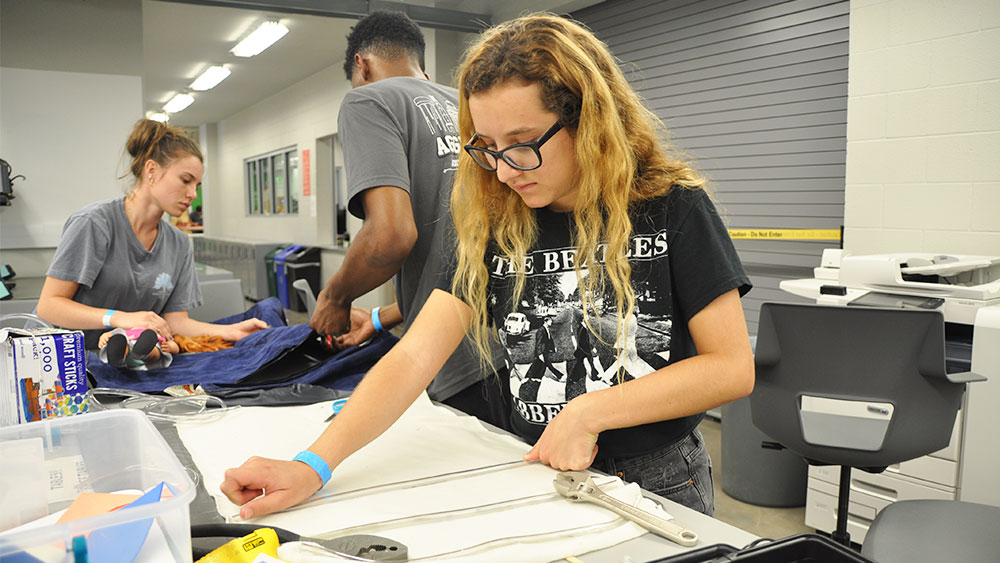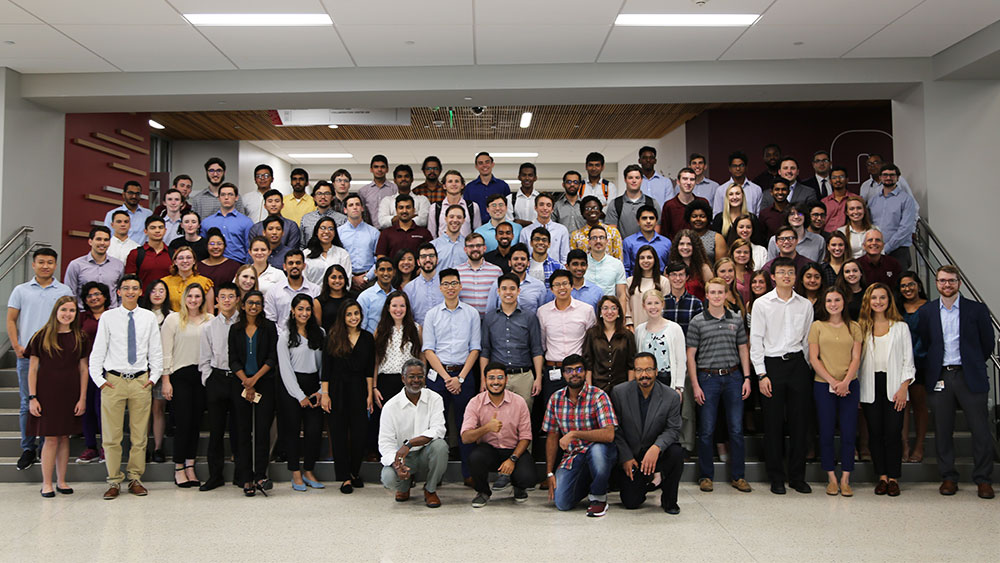
Armed with obscure items like Nerf guns, dolls, tubing and blow-up mattresses, 90 students tackled some of the medical field’s toughest challenges in the latest Aggies Invent, hosted by the Texas A&M University College of Engineering.
This past weekend, Texas A&M engineering students worked side-by-side with students from other universities participating in the Undergraduate Summer Research Grant Program and students in Texas A&M’s EnMed program. From a better-designed colostomy bag to a new take on broken bone fixation —13 teams presented novel concepts that tackle real-world problems with life-saving applications.

This has been our largest Aggies Invent yet. It’s a rewarding experience, observing student collaboration spanning universities and educational backgrounds. Knowing that students have made major headway on real issues in the medical field, with the potential to save lives, makes it even more so.
The students who participated all had a major characteristic in common: they could all see the benefits to engineering and the medical field coming together. This is the primary goal behind the EnMed program, which aims to educate a new kind of physician who will create transformational technology for health care.
For rising senior Alexa Graham, a biomedical engineering student from Georgia Tech, the opportunity to participate was too good to be true.
“Most of my friends are really into industry, and they don’t really ever advertise programs like this that are pre-med focused,” said Graham. “As soon as I saw that, I knew it was for me! I’ve done a hackathon a few years back that I really loved, so I’m excited to be here for this.”
For Dr. Anthony Guiseppi-Elie, associate dean for the EnMed program, spending his weekend with these students is well worth it.
“I like to see this process of innovation take place,” said Guiseppi-Elie. “I like to see these students start with something that is a blank sheet and go from that to something real and tangible. The process from beginning to end is very exciting to see. Even if it’s mature professionals or students doing it for the first time.”

Ultimately, team Flo-BOT-emist was awarded the first-place prize of $1,000. Comprised of seven students from four different universities and five subject backgrounds, they chose to design a better way to distribute blood to multiple vials in a more efficient manner.
Basing their design off of a Nerf gun, the team utilized the rotary compartment of the artillery chamber to house vials. One click allows the compartment to rotate and move on to the next vial seamlessly and without jarring the needle. The team hopes to take the innovation further, as its feasibility and potential to reduce patient discomfort can only enhance the phlebotomist tech’s ability to draw blood in a simpler manner.
Second place was team VesselTech. They developed a biosensor-enabled perfusion system that emulates blood flow characteristics of the microvasculature. This system, once successfully demonstrated, is to be deployed in the Cardiovascular Sciences Laboratory at Houston Methodist Research Institute and the Center for Bioelectronics, Biosensors and Biochips in the College of Engineering at Texas A&M.
The hope is to provide a means to improve on the in vitro studies of Hutchinson-Gilford progeria syndrome cells by accommodating for the fluid dynamics of blood flow, and also an avenue to study endothelial drug delivery systems.
“I’ve never done a design competition, but I’m really passionate about clinically relevant problems and combining engineering in medicine, and this has been first experience doing that,” said Michaela Pitcher, a biomedical engineering student from Clemson University. “I really enjoyed not just working with people my age, but people with more experience and learning more about real problems and designing those solutions.”
Taking third place was team Say What?, which developed new hearing aid technology that functions from vibrations via the bones in the skull, versus the traditional ear canal. An added bonus to their tech is a Bluetooth link that syncs to a customizable mobile app with GPS capabilities.
Uncharacteristically, a fourth team was also ranked due to the overwhelming response from judges that their solution be recognized for its viability and likelihood for adoption. Team IRIS presented a patient-oriented solution to artificial intelligence-assisted documentation of a doctor visit.
“For every hour spent with a patient, a physician spends two hours on administrative work,” said Ryan Nguyen, an EnMed student. “At IRIS, our aim was to return this time to the physicians and allow them to spend more face-to-face time with their patients.”
This solution aims to increase the quality of care by aiding physicians through several key design features all relating to a central integration of records, data analytics and interfacing, and an Alexa-style interaction for assistance.
For more information on Aggies Invent, visit http://tx.ag/AgsInvent